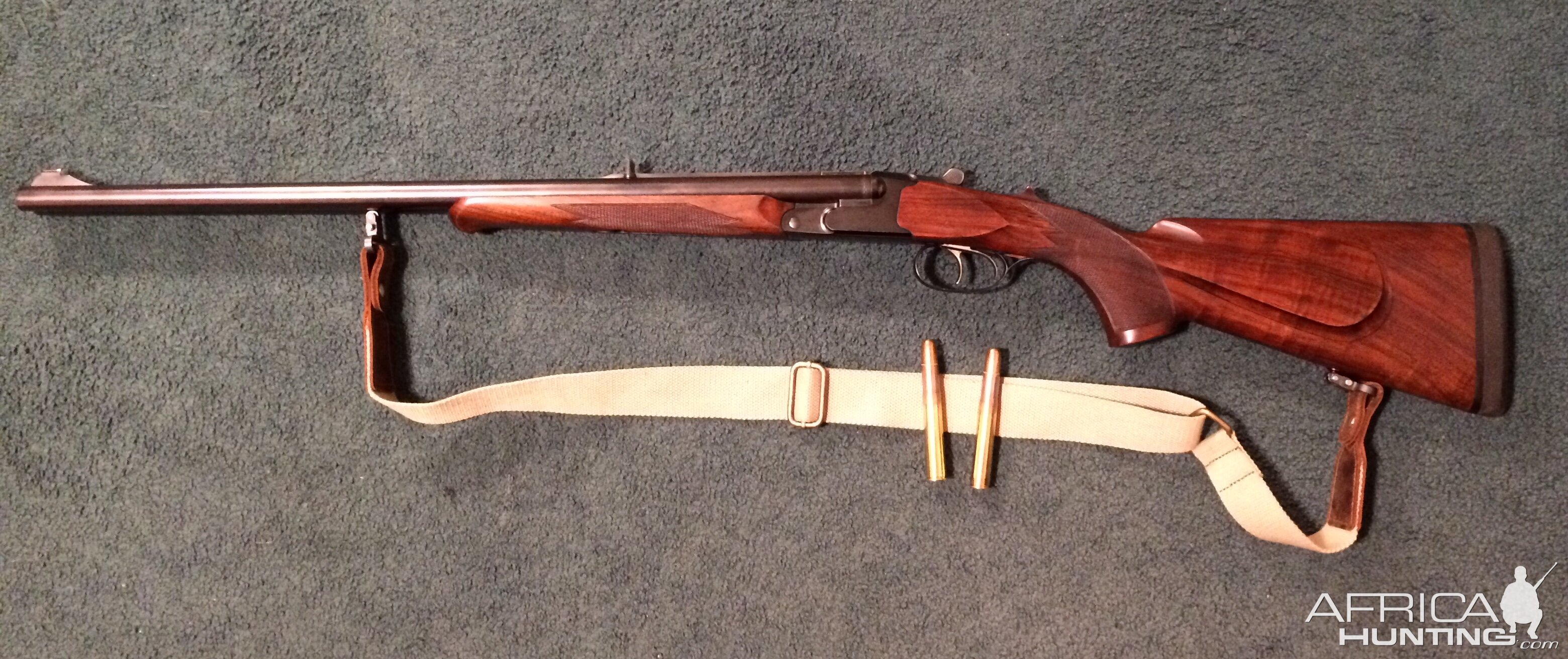I shoot the K gun in .470
TOBY458, so I am obviously biased. Mine was custom ordered with a blued action. I really dislike the nickel plating to begin with, and even more when it starts chipping away

But I will try to be objective.
Regarding caliber...
To each their own!
I fully acknowledge the popularity of the .40+ cal double rifles, but I do not differentiate between buff or elephant, I differentiate between "killing" and "stopping".
I suspect that like the .404 Jeffery bolt action rifles, the 450/400 doubles are popular because they are stepping into big bore territory, while still providing mid-bore recoil. Are they great killers? Absolutely! Are they great "stoppers"? No.
Apparently they have always lacked the frontal area of larger calibers, the bullet weight, and the raw power to fully belong to the club. Most pros for the last hundred years - I mean the pros with literally thousands of elephants and buffalo to their individual credit - have argued that a .45+ caliber 500 gr bullet delivering 5,000 ft/lbs of energy is the right minimal recipe for a charge stopper. The 450/400 delivers a .40 caliber 400 gr bullet at 4,000 ft/lbs. It is simply not enough for a "stopper." Pretty good for a DG rifle, but not for a "stopper."
Like the .416 Rigby (and all its modern derivatives trying to copy it in shorter cases, albeit at significantly higher pressure), the 500/.416 bridges the gap between the .375 and the .45. In so many words, it almost (but not quite) delivers a .450 / .458 / .470 punch (albeit with less frontal area and less energy: 40 cal and 4,700 ft/lbs), with almost the ballistic trajectory of a .375. It can handle a charge (although not being the best at it) and it can still shoot plains game at 200 yards (although not being the best at it), but in which case it really needs to be scoped.
As much as I left the .375 H&H bolt action bandwagon for the .416 Rigby bandwagon, I really am not interested in the 500/416. I am not really sure what the .416 Rigby trajectory does for a by-definition close quarter rifle such as a double. Sure, scoping it helps bridging that gap, but it still will not shoot as accurately as a bolt action at 200 yards, and it will not stop as well as a .450 / .458 / .470 / .500 at close range. A solution in search of a problem?
My personal take is that if someone is going to spend $15,000 to $20,000 (or more) on a double rifle, for that money one would want a dual purpose killer/stopper double. That means a .450 / .470 / .500.
The difference between .450 / .470 / .500 is small enough that I would have bought either of the three, had there been a financial incentive. It ended up being a .470 because that there was nothing to save with a .450 or .500, and
.470 ammo is SO MUCH easier to find...
Regarding the safety / cocking mechanism...
The answer is in two parts, because the cocking system acts as both a cocker/decocker and a safety:
1) It is objectively not as easy and unobtrusive to switch ON/OFF as a regular safety is (you need to exert a certain pressure to coil the strikers' springs), so if you are in the habit of switching automatically the safety on/off as you mount/dismount a shotgun or double rifle to your shoulder, it is not as smooth as a traditional safety. I appreciated this smoothness on my previous double, a traditional pre-WWII Jules Burry 450 #2.
2) It is objectively immensely safer than a regular trigger-locking safety when carrying the gun, especially in single file, when muzzle safety can be challenging, because the gun can be fully loaded while fully safe (uncocked), even more so than a firing pin-locking safety (e.g. Mauser or Winchester "3 positions safety," Weatherby safety, etc.) makes a bolt action as close to fully safe as possible while loaded.
Overall, I feel unquestionably safer along the hunt with this system, but I DID have to acquire a new muscle memory reflex to cock it as I mount the gun.
A third part to the answer, is to clarify that contrarily to what has been said by some, when the Kreighoff cocker has been cocked, it remains in the cocked position, even when the gun is opened and reloaded, so there is no requirement to recock the gun after it is opened (as I believe the Blaser S2 requires). Reloads are therefore entirely identical to those with traditional guns: break open, flick the empties out, drop two fresh shells, close, aim, shoot. Or if you do not need to shoot again, you can then decock any time you later want.
So, in summary: it is different; it works; like everything new, it needs to be learned; and, in my view, it is an improvement. I never felt comfortable resting my two hands on top of the muzzles of my .450 #2 - and I always cringe when I see someone do it and trust 100% the trigger safety of their fully loaded double - but I would now feel safe resting my hands on top of my uncocked Kreighoff .470 ... if it was not bad muzzle safety discipline anyway







